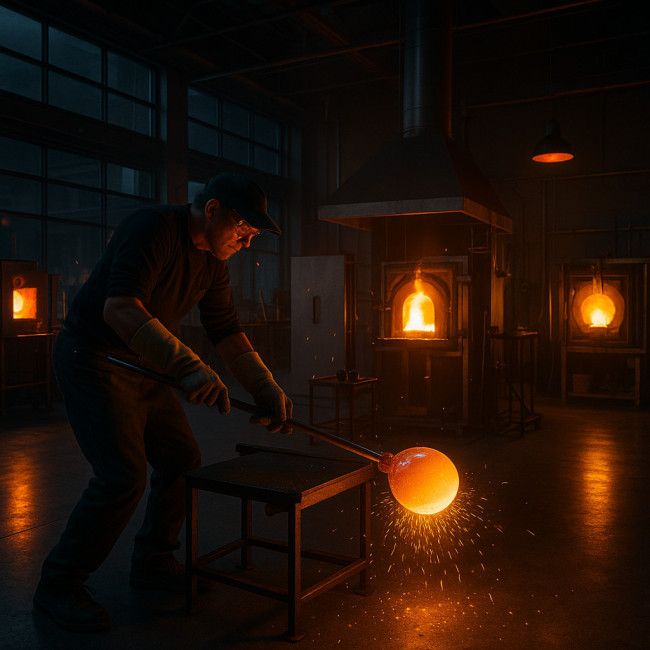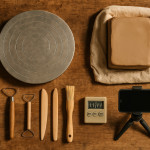Glass artist residencies worldwide: pick the right program for new techniques
Wondering where to master pâte de verre, cold-working or large-scale kiln casting? This guide compares leading glass artist residencies worldwide, highlights key selection criteria, funding tips, and action steps so you can secure the perfect studio slot and return home with fresh techniques and a stronger network.
Why a glass artist residency supercharges your progress

Traditional apprenticeships are rare, online tutorials can only do so much. A residency places you in a fully equipped studio, surrounded by peers and mentors, for an intense period of experimentation. You leave with: in addition, a sense of momentum that redefines your practice; many residents report that six concentrated weeks equal an entire year of solo practice at home, both in measurable skill milestones and the intangible yet crucial gain of critical confidence that propels ambitious future projects.
- Expanded technical range – access to hot shops, water-jet cutters or CNC grinders you may not own.
- Critical feedback loops – daily input from visiting artists, curators and technicians.
- Portfolio upgrades – ambitious pieces you can photograph for future case studies.
- Visibility – many centres host open studios or exhibit resident work in on-site galleries.
6 criteria to pick the right program
1. Technique focus
If you crave borosilicate flame-working, skip a casting-heavy residency. Scan past resident projects and equipment lists. Complementary reading: studio ventilation and kiln upkeep protocols to gauge facility standards.
2. Mentorship intensity
Some programs bring in weekly guest critics; others leave you fully self-directed. Match your learning style.
3. Funding model
Fees range from €0 (fully funded) to US $900 per week. Apply early for travel bursaries or follow the grant tips in grant proposal secrets for glass innovators.
4. Studio access hours
Hot shop calendars fill quickly. Ensure you can book enough furnace time to test new moulds or colour bars.
5. Safety and sustainability
Look for programs that recycle cullet and use efficient annealing schedules. The recycled glass sourcing playbook explains why this matters for eco-minded collectors.
6. Career leverage
Does the centre invite gallerists or organise art-fair booths? Networking can lead directly to limited-edition releases.
Residency hotspots and what they offer

Below is a snapshot of well-regarded programs. Use it as a launchpad, then cross-check dates on official websites and the broader training opportunities for craft designers directory. Think of it as a living map: programmes open, evolve or merge every season, and alumni reviews can reveal hidden gem facilities or red flags that official brochures gloss over, so maintain an up-to-date spreadsheet linking deadlines, costs, mentorship perks and visa rules before you click “apply”.
| Residency | Country | Duration | Main Techniques | Cost / Stipend |
|---|---|---|---|---|
| Corning Studio Residency | USA | 8 weeks | Hot glass, lamp-working | Free + US $1 500 stipend |
| Bild-Werk Frauenau | Germany | 2–4 weeks | Kiln casting, engraving | €1 150 tuition (housing extra) |
| North Lands Creative | Scotland | 4 weeks | Cold-working, pâte de verre | Free studio, self-fund housing |
| Kanshichiyama Artist-in-Residence | Japan | 6 weeks | Glass blowing, copper wheel cutting | ¥200 000 grant |
| JamFactory Associate Program | Australia | 2 years | Production glass, design | AUD $610 monthly fee, sales commission |
Regional insights
- North America – High equipment density; competition tight. Build a clear project pitch and cite market goals.
- Europe – Heritage centres support niche skills like copper wheel engraving. EU mobility grants can offset fees.
- Asia-Pacific – Programs often bundle cultural exchange, e.g., kiln visits to traditional pottery towns.
- Latin America & Africa – Fewer dedicated glass hubs, but rising interest in recycled-glass studios financed by NGOs.
Step-by-step application roadmap
- Clarify objectives. “Develop 5 pâte de verre lighting prototypes” is stronger than “experiment with glass.”
- Draft a project timeline. Show how weekly milestones fit the residency calendar.
- Prepare a concise portfolio. 10–15 images, labelled process notes. For guidance, review the skill-building roadmap that covers portfolio sequencing.
- Secure references early. Glass studios receive floods of last-minute requests; give mentors time to write.
- Budget realistically. Include travel insurance, shipping crates, and post-residency exhibition costs.
Funding boosters you might overlook
Beyond national arts councils, explore:
- Material sponsors. Float your concept to glass batch suppliers in exchange for product demos.
- Regional tourism boards. They often back artists who will promote the location on social media.
- Corporate CSR funds. Sustainability-focused companies back projects using recycled cullet.
Maximise the residency once accepted
Set experiments in sprints
Divide goals into 48-hour blocks: colour tests, mould trials, cold-shop finishing. This agile mindset prevents the “I ran out of time” syndrome.
Schedule critiques
Lock weekly feedback slots with mentors. Early comments on wall thickness or annealing cycles save wasted firings later.
Document everything
Shoot process videos, gather temperature charts, note batch recipes. These assets feed future grant apps and social posts.
Build lasting networks
Offer skill swaps: trade a casting lesson for a digital rendering session. Collaboration can blossom into joint exhibitions.
After the residency: turning momentum into income
Within two weeks of returning, do three things:
- Edit and publish new works. Upload high-res images, add kiln schedules and reflection notes.
- Pitch galleries. Mention the residency pedigree; curators value recognised programs.
- Teach a workshop. Share new skills locally and recoup travel costs through course fees.
Quick self-assessment quiz
FAQ
- How early should I apply for top glass artist residencies?
- Plan 9–12 months ahead. Popular programs like Corning fill fast, and many grant deadlines close six months before arrival dates.
- Can emerging artists compete with established names?
- Yes. Jurors prioritise a clear concept, evidence of technical commitment, and a realistic timeline over exhibition history.
- What if I need special equipment not listed?
- Ask the coordinator. Many centres have partner universities or local studios where you can book specialised machinery for a day fee.
- Will language barriers be an issue?
- Most programs operate in English or provide translators for studio instructions and safety briefings.
Next step: secure your dream residency
Make a shortlist tonight, mark application deadlines in your calendar, and draft your project objective in one clear sentence. Every winning residency journey starts with that first articulated goal.
Ready to deepen your craft? Bookmark this page, share it with your studio peers, and start polishing that pitch.











